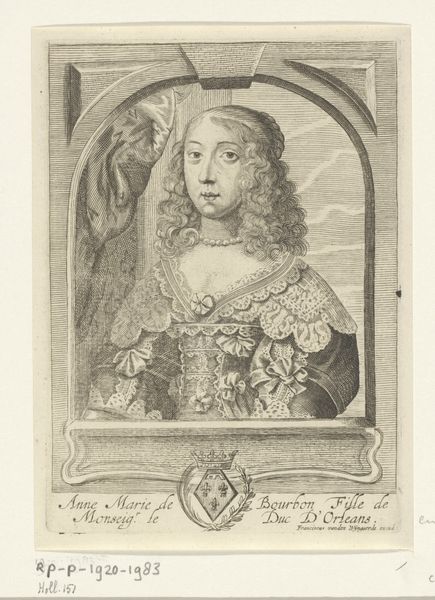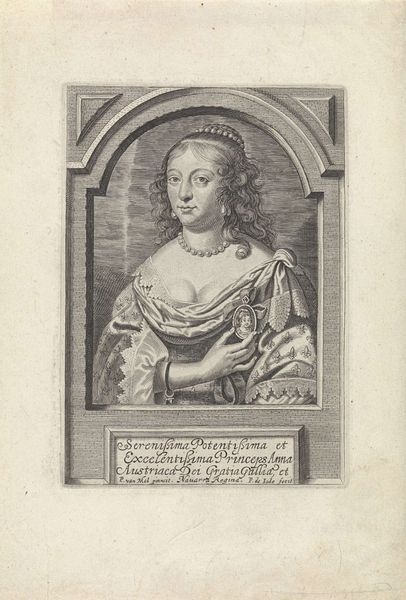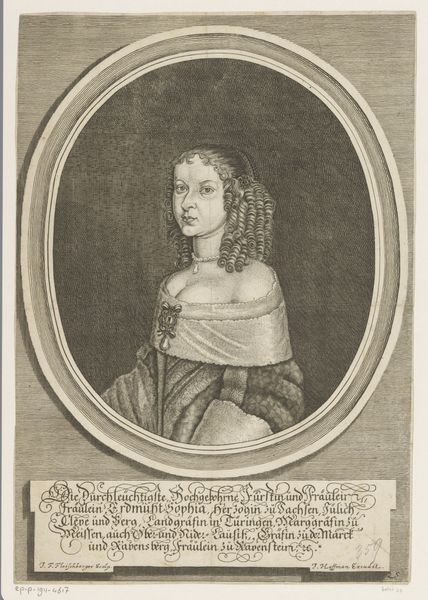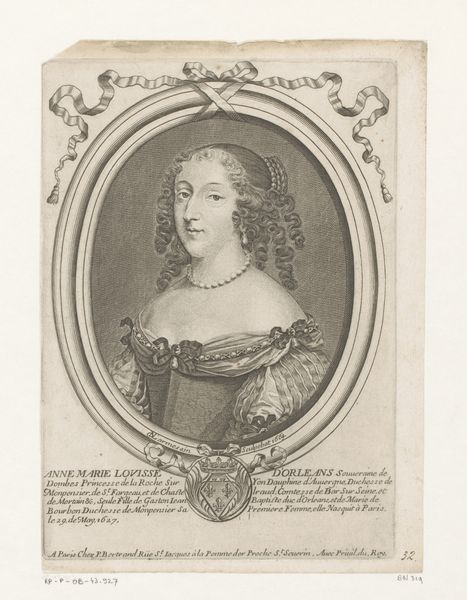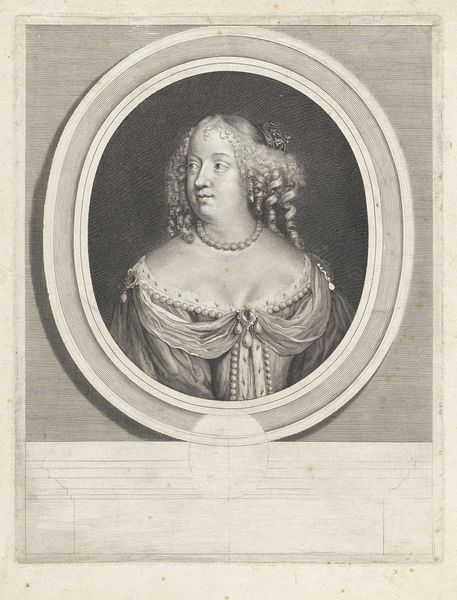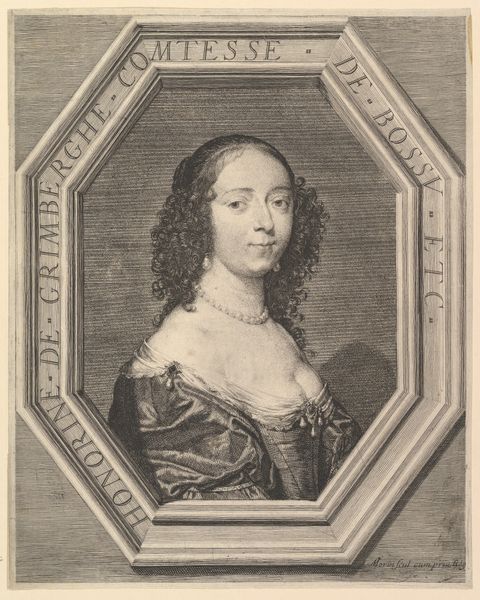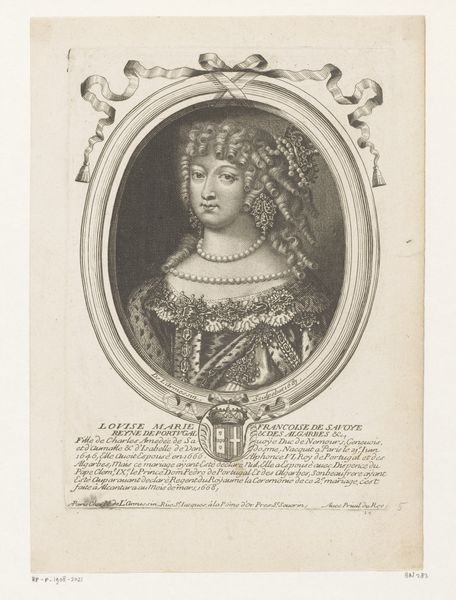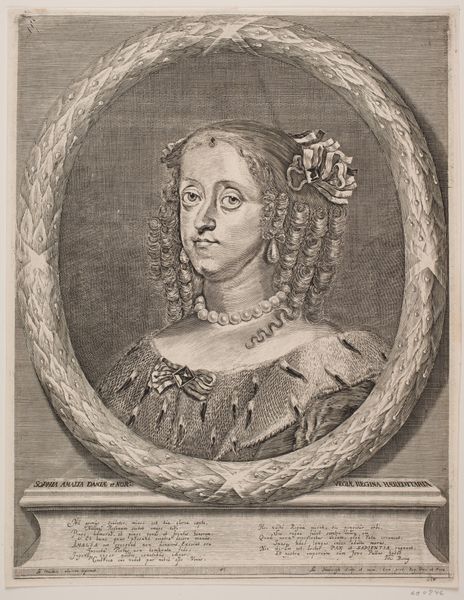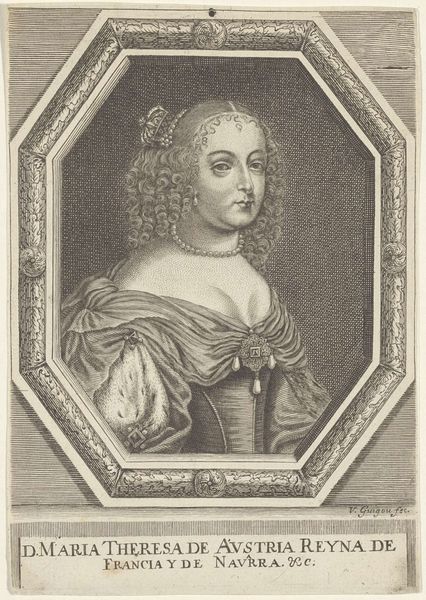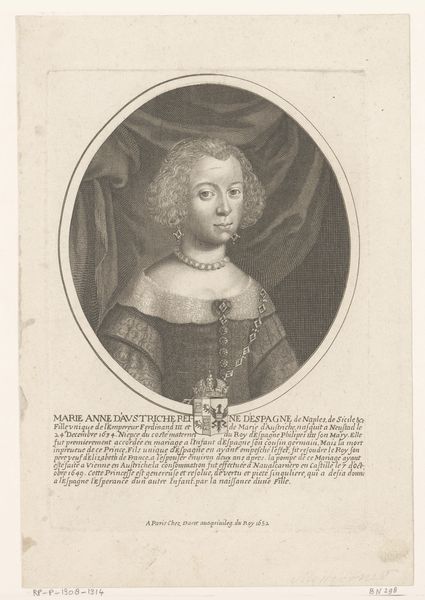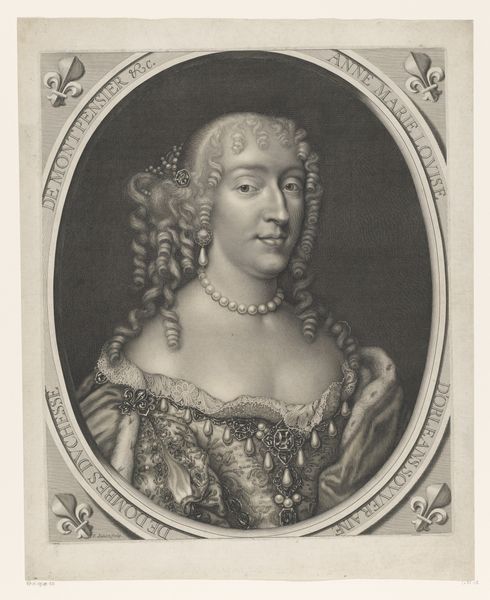
drawing, print, engraving
#
portrait
#
drawing
#
baroque
# print
#
engraving
Dimensions: Sheet: 7 1/16 × 4 13/16 in. (18 × 12.2 cm) Plate: 6 5/8 × 4 5/16 in. (16.8 × 11 cm)
Copyright: Public Domain
Editor: This is Robert Nanteuil's engraving, "Marie d'Orleans, Duchesse de Nemours," made between 1652 and 1662. It’s so formal, almost austere, yet her curls seem so playful in contrast. What strikes you most about this portrait? Curator: The formal elements point to the intersection of power and image production in the French court. Nanteuil was known for his engravings of prominent figures. These weren’t just portraits, but tools in shaping public perception. The fleur-de-lis in the corners speak to her royal connections, obviously, but do you notice anything in her gaze? Editor: She’s looking slightly off to the side, like she's aware of an audience, maybe even addressing one. Curator: Precisely. Engravings like these circulated widely, reinforcing status through controlled likeness and idealization. Think about the printing press at the time and its ability to disseminate these images across society; it helped in constructing and broadcasting particular narratives about power. Is she humanized or deified? What does this tell us? Editor: It's interesting how something that feels so personal – a portrait – could function as a political tool. It almost makes you wonder how Marie herself felt about it! Curator: Absolutely. We can analyze what visual cues were employed at the time to fashion the courtly figure in an increasingly mediated fashion. This makes the images a document and symbol of authority at once. What is also worth investigating is who was able to have these prints and participate in this image economy. Editor: So, it's about the dissemination and reception of the artwork within the power dynamics of that era. I see it differently now, beyond just a portrait. Thank you for making that clearer. Curator: My pleasure. Looking closely at the production of images encourages us to rethink power dynamics across time and different historical contexts.
Comments
No comments
Be the first to comment and join the conversation on the ultimate creative platform.
